|

The air is crisp and the colours are sharp in autumn, making it the perfect time of year to enjoy spectacular views and stunning scenery. Autumn is also a great time for visiting sites that have been busier during the summer months. People of all ages and abilities can enjoy a walk full of seasonal colour at these 5 sites:
- Discover a tranquil lake in Gwydir Forest Park surrounded by trees rich with seasonal shades on the Llyn Elsi Walk from Betws-y-coed.
- Challenge the children to spot the animal sculptures hidden amongst the autumn colours on the Animal Discovery Trail in Dyfi Forest near Machynlleth.
- Admire the array of brown, gold and maroon colours of the raised bog from our accessible boardwalk at Cors Caron National Nature Reserve near Tregaron.
- Enjoy the rich red and glorious golden hues and the crackle of fallen leaves underfoot on a circular walk through Cilgwyn Wood near Llandovery.
- Savour the views of the dramatic Wye gorge through the colourful trees from the viewpoints along the Wonders of Whitestone trail in Whitestone Wood near Chepstow.
For more information on places to visit look here.
|
|
|
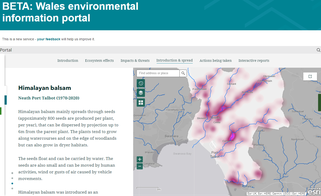
Inform and inspire your learners with NRW’s new StoryMaps, available on Wales Environmental Information Portal. A story can raise awareness, influence opinion and effect change. Using geography as a means of organising and presenting information, maps can be used to help illuminate a tale. By telling the story of a place, issue or trend, interactive StoryMaps can combine text, photos and interactive reports and charts. Working best on desktop computers and designed for general, non-technical audiences, StoryMaps provide an interactive narrative. Learners can access, amongst other things, information on floods, habitats, and landscapes as well as data on pollution incidences or occurrences of invasive non-native species within Wales. As well as raising your learners’ awareness of environmental issues, this resource will help you meet the Digital Competency Framework.
|
|
|
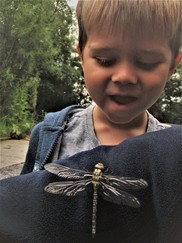
Sometimes all that’s required to start settings off on their outdoor learning journey is a little bit of research, imagination, and help. Lisa Davies, a Conwy, Early Years Education Advisory Teacher explains. “I was working with Llandudno Junction Playgroup, a pre-school group who didn’t have an outdoor space, so I delivered a few sessions, modelling outdoor learning activities in the local area to get both the children and staff outside. As a member the Egin Conwy OLW Network Group, we then received a grant from Outdoor Learning Wales to develop things further. The funding paid for the group to receive 2 further sessions at the Conwy RSPB Nature Reserve.”
We asked Lisa what impact, if any, did the sessions have? “Taking part in the modelled activities saw both the staff and children grow in confidence. Using local outdoor spaces provided valuable experiences to develop both the children and staff’s learning and understanding of the natural environment as well as their health and wellbeing. I think the sessions gave the practitioners, especially Lynn Lever, the leader, the confidence to plan and facilitate their own sessions to develop children’s play and learning. They were able to see how the sessions were planned and organised and how simple activities provided so many learning opportunities and enhanced the children’s well-being. Following the modelled sessions, the playgroup increased the amount of time spent outdoors. As they didn’t have any outside space at the time, they began taking the children out on visits, which helped to create a feel of being part of the community and enhanced learning experiences. Recognising good practice, Estyn commented on how well Llandudno Junction Playgroup were using community spaces in the local area.
Suitable spaces for outdoor learning may not always be immediately apparent – you may need to get out into the local community and look for possibilities you can walk to or seek help and advice from a local landowner, the council or LEA. Lisa adds, “Recognising the value of having access to natural areas for outdoor learning, the group have since moved to a new location. They now have a small wild space near their setting which they use daily. I hope to repeat this project in the future to inspire more Conwy pre-schools to access and discover nature and benefit from this invaluable resource, the great outdoors!”
|
|
|

Whatever your interest or age group you are working with, we’ve got a range of online training webinars coming up in November:
*NEW COURSE* - Life on the river
A meander through the fascinating world of trout, tributaries and tides. From the water cycle to animal adaptations, the secret life of brown trout to how to build an otter holt, this webinar will focus on the Rivers Dee and Taff but all the activities shared could be used to learn more about any river in Wales or beyond. Cross-curricular in content, this session will highlight how learners can improve their knowledge about the social and economic benefits rivers offer as well as their environmental plight.
*NEW COURSE* - What Matters about the climate emergency?
This training will support teaching and learning about the current state of the climate and nature, specifically in Wales. A free, virtual webinar which will give you an insight into the causes and consequences of climate change and will examine what we need to change to combat the worst effects. Join us as we discuss how to involve, encourage action and raise awareness of this emotive and difficult topic amongst our future generations.
Visit our Tocyn Cymru webpage to book your place.
|
|
|
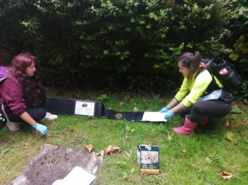
Cardiff Uni students baiting a hedgehog footprint tunnel to see if hedgehogs are visiting the campus.
Due to habitat loss, increased traffic on roads, new developments and garden hazards, hedgehogs have declined by up to 50% since the year 2000. Now vulnerable to extinction Jo Wilkinson from the Hedgehog Friendly Campus explains how the program aims to turn university, college, and school campuses into places where hedgehogs can safely thrive and survive.
“We need staff and students to step up and become hedgehog heroes to lead by example on their campuses, whilst educating the community on how human actions can impact on hedgehogs,” explains Jo. “We provide a free online toolkit, full of best practice activities, to help settings do the best for hedgehogs. Member settings are provided with free training and a workshop as well as physical resources to help them find out if hedgehogs are on their campus. We work with Grounds teams to make sure they know how to manage the land with hedgehogs in mind. We also provide free campaigning resources to help settings raise awareness of the issues facing hedgehogs in the community. Campuses that complete enough activities receive Hedgehog Friendly Campus accreditation from the British Hedgehog Preservation Society.”
“Different settings are working to achieve different actions. For example, St Joseph’s Primary, Blaenau Gwent have been designing hedgehog awareness posters, creating hedgehog habitat piles and using cameras to check for hedgehogs. Cardiff University Hedgehog Friendly Campus (pictured) have been organising litter picking events, hosting online talks and raising awareness on social media. They have also carried out surveys and have made hedgehog houses, log piles and bug hotels on campus.” Jo adds “Next year, we hope to recruit every single university campus to take part in the program, and we’re opening the doors to more colleges and primary schools.” Hedgehog Friendly Campus is funded in full by the British Hedgehog Preservation Society. For more information please contact info@hedgehogfriendlycampus.co.uk.
|
|
|
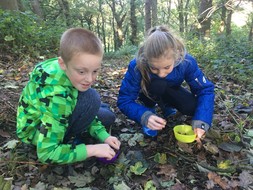
Forest trees that have a lot of seed predators such as oak, produce a huge glut of seeds every few years and 2020 saw an abundance of acorns on the forest floor. This is known as a mast year. So why aren’t there acorns on our trees in 2021? Andy Wright, our Senior Specialist Advisor on Plant Health explains:
“The reasons for this periodic fruiting are still unclear but it is probably related to a number of environmental, genetic and biological factors. It is thought that the production of high seed numbers every few years may be the trees way of ensuring good dispersal of its genetics (the seed). Heavy seed production ensures that seed predators, such as jays or squirrels, have their fill and while many seeds may end up in unsuitable ground, at least some are almost guaranteed to germinate. Acorn production during a mast year does take a heavy toll on a tree’s resources and the tree will produce hardly any acorns the following year to give itself time to recover. The production of seed is also linked to environmental and biological factors that occur during the period between from when the tree buds start to form and the eventual dispersal of fruit (seed). This may be favourable weather conditions at a key stage for good seed production. In 2021, there was a number of hard frosts in spring, which may have reduced the amount of pollen produced and combined with the high production of seeds on 2020, has led to a poor harvest of acorns in 2021. In future, climate change may change the frequency of mast years, high frequency of late frosts will reduce the level of seed production, very high summer temperatures may result in drought conditions, but if we have a good spring, and the trees are not stressed throughout the summer, and the year before wasn’t a mast year, then you may have a good (mast) year. However, we don’t know everything and nature has a way of proving us wrong!”
With this in mind, Acorn Antics collections in 2022 will be even more important and we hope you will join us then to help ensure we have strong, resilient oak trees in Wales in years to come.
|
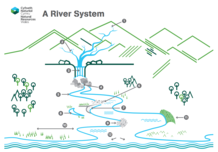
Bring river systems to your learners’ stream of consciousness with our new ‘Understanding River Systems’ resources. Every river has its own character and shape, but all river systems share many basic features. Our ‘Understanding river systems’ activity provides opportunities for learners to explore river processes and landforms. From levees to oxbow lakes, your learners will soon be able to identify these features, will understand how they form and will be fluid in river system vocabulary.
Turbidity all a bit murky to you? Turbidity is a measurement of how cloudy, dirty or murky a body of water is. Find out why it’s important and make your own homemade turbidity meter to find out what the turbidity levels are in your water source with our new resources.
|
|
|
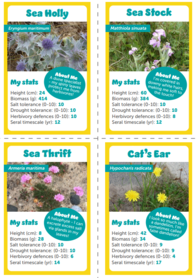 |
|
Dynamic Dunescapes is a project looking to restore sand dunes across England and Wales for the benefit of wildlife, people and communities. Working with a Biology teacher, the project team have worked to co-create a game for students studying sand dunes and succession – Dune Battle! Similar to a popular category-based card game, players battle it out with fifty or so plants that can be found in the sand dune systems. The aim of the game is to support learners to learn about the flora they find in the dunes, where they can find them, how big they are and learn some interesting facts about their adaptations. You can download the resource here. |
|
|
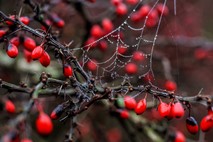
Would you like regular outdoor learning updates and news? Why not follow the Outdoor Learning Wales Twitter account or closed Facebook Group which both offer a platform to keep up-to-date, spread the word of ongoing projects and facilitate discussions with anyone with an interest in outdoor learning and environmental education in Wales.
You are receiving this newsletter because you have previously attended a training course run by NRW or have requested to join the NRW Education or Outdoor Learning Wales Network Group mailing lists. We hope you found it useful but if you wish to be removed please respond using the ‘Unsubscribe’ option below.
|
|
|
|
|
|